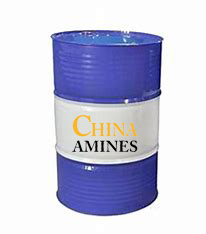1. Chemical Structure and Properties
Molecular Formula: C₂HCl₃
Structural Formula:
Cl₂C=CHCl
A chlorinated hydrocarbon with a double bond between two carbon atoms, each bonded to chlorine atoms.
Physical Properties:
Appearance: Clear, colorless liquid with a chloroform-like odor.
Boiling Point: 87°C; Density: 1.46 g/cm³; Vapor Pressure: 58 mmHg at 20°C.
Solubility: Slightly soluble in water (1.1 g/L at 20°C); miscible with most organic solvents (e.g., ethanol, ether).
Chemical Properties:
Reactivity: Stable under neutral conditions but decomposes under UV light or heat to produce toxic gases (phosgene, HCl).
Reacts violently with strong bases (e.g., NaOH) and metals (e.g., aluminum).
Flammability: Non-flammable but forms explosive mixtures with air at high temperatures.
2. Industrial Applications
Metal Degreasing:
Primary Use: Vapor degreaser for removing oils, greases, and waxes from metal parts in automotive and aerospace industries.
Dry Cleaning:
Historical Use: Replaced by tetrachloroethylene (perc) due to toxicity concerns.
Chemical Synthesis:
Intermediate: Produces refrigerants (e.g., HFC-134a) and PVC stabilizers.
Adhesives & Coatings:
Solvent: Used in paints, adhesives, and printing inks (now largely phased out in consumer products).
3. Safety and Toxicology
Health Hazards:
Acute Exposure:
Inhalation (≥50 ppm): Dizziness, headache, CNS depression (TLV-TWA: 10 ppm).
Skin Contact: Defatting action causes dermatitis; liquid absorption leads to systemic toxicity.
Ingestion: Highly toxic (oral LD₅₀ rat: 4,920 mg/kg); fatal at doses >5 mL.
Chronic Effects:
Carcinogenicity: Classified as Group 1 (carcinogenic to humans) by IARC due to kidney/liver cancer risks.
Neurotoxicity: Peripheral neuropathy and Parkinson’s-like symptoms in occupational settings.
Reproductive Toxicity: Linked to developmental defects in animal studies.
Protection Measures:
PPE: Butyl rubber gloves, full-face respirators with organic vapor cartridges.
Storage: Corrosion-resistant containers (stainless steel or glass); store away from heat/light.
4. Environmental and Regulatory Compliance
Environmental Impact:
Persistence: Slow biodegradation (half-life: 6–12 months in groundwater); forms stable breakdown products (e.g., dichloroethylene).
Bioaccumulation: Moderate (log Kow: 2.4); accumulates in fatty tissues of aquatic organisms.
Air Pollution: Volatilizes readily, contributing to ground-level ozone formation.
Regulatory Frameworks:
EU:
REACH: Restricted (Annex XVII); banned in consumer products since 2016.
CLP: Classified as Carc. 1A (H350), STOT RE 1 (H372).
USA:
EPA: Listed as a hazardous air pollutant (HAP) under Clean Air Act; maximum contaminant level (MCL) in drinking water: 5 ppb.
OSHA PEL: 50 ppm (8-hour TWA).
China:
GB 13690-2009: Classified as Hazardous Chemical (Class 6.1).
Waste Management:
Incineration with HCl scrubbers; soil remediation via bioremediation or thermal desorption.
5. Case Studies and Application Insights
Case 1: Camp Lejeune Water Contamination (USA, 1950s–1980s):
Impact: TCE and other solvents leaked into groundwater, causing cancer clusters among military personnel.
Regulatory Response: Led to stricter EPA groundwater standards and the Camp Lejeune Act (2012).
Case 2: Transition to Safer Alternatives (3M, 2020):
Process: Replaced TCE with bio-based solvents (e.g., limonene) in electronics cleaning.
Result: Reduced worker exposure incidents by 90% and VOC emissions by 50%.
Comparative Analysis:
TCE vs. Hydrofluoroethers (HFEs):
Pros: Lower cost and higher solvency for heavy greases.
Cons: HFEs have lower toxicity, zero ozone depletion potential, and faster biodegradation.
Specifications:
Trichloroethylene is a clear, colorless liquid with ≥99.5% purity, a boiling point of 87.1 °C, and a density of 1.46 g/cm³, widely used as an industrial degreasing agent and solvent in adhesives, coatings, and chemical synthesis.


